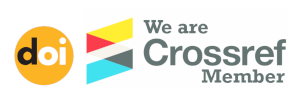EXPLORING THE EFFECT OF USING YOUTUBE AND INSTAGRAM ON ENHANCING EFL BACHELOR STUDENTS' LISTENING COMPREHENSION
Keywords:
Instagram, listening comprehension, social media, YouTubeAbstract
Social media are digital platforms used to share content and communicate with others; it plays an important role in students' lives. This study explores the effectiveness of using social media platforms such as YouTube and Instagram in teaching and learning English for non-English speakers. In particular, this quantitative study investigates the impact of social media videos on improving their listening comprehension skills. Moreover, the study also investigates the teachers’ perspective on implementing social media channels as an English language teaching tool. The reliability and accuracy of using social media as a teaching and learning tool were checked against a survey study conducted on EFL students at different universities in the kingdom of Saudi Arabia. 47 students were selected randomly and divided into two groups: a control group and an experimental group. In the beginning, all students were tested according to the Oxford Standard English test to determine their listening proficiency level. After that, the use of social media was implemented in lecturing the listening skills of the experimental group while the controlled group used the traditional audio teaching methods. The analysis of the experimental results using the SPSS revealed that the use of digital channels as a learning tool enhances the listening comprehension of EFL Saudi students. Therefore, it is recommended to use audio-visual clips in listening classes rather than traditional audio clips.
Downloads
References
Agustin, R. W., & Ayu, M. (2021). THE IMPACT OF USING INSTAGRAM FOR INCREASING VOCABULARY AND LISTENING SKILL. Journal of English Language Teaching and Learning, 2(1), 1–7. https://doi.org/10.33365/jeltl.v2i1.767
Ahmad, S. Z. (2016). The flipped classroom model to develop Egyptian EFL students’ listening comprehension. English Language Teaching, 9(9), 166. https://doi.org/10.5539/elt.v9n9p166
Alqahtani, E. (2014). Effectiveness of Using YouTube on Enhancing EFL Students’ Listening Comprehension Skills [MA thesis]. Al-Imam Muhammad Ibin Saud Islamic University.
Barati, L., & Biria, R. (2011). The impact of first language intonational clue selection on second language comprehension. Open Journal of Modern Linguistics, 01(02), 33–38. https://doi.org/10.4236/ojml.2011.12005
Brett, P. (1997). A comparative study of the effects of the use of multimedia on listening comprehension. System, 25(1), 39–53. https://doi.org/10.1016/s0346-251x(96)00059-0
Gowhary, H., Pourhalashi, Z., Jamalinesari, A., & Azizifar, A. (2015). Investigating the effect of video captioning on Iranian EFL learners’ listening comprehension. Procedia - Social and Behavioral Sciences, 192, 205–212. https://doi.org/10.1016/j.sbspro.2015.06.029
Krashen, S. D., & Terrell, T. D. (1998). the natural approach.
Latifi, M., Ketabi, S., & Mohammadi, E. (1013). The Comprehension Hypothesis Today: An Interview with Stephen Krashen. Electronic Journal of Foreign Language Teaching, 10, 221-233. http://e-flt.nus.edu.sg/
Martínez, M. E. (2022). THE USE OF ESL YOUTUBE VIDEOS TO IMPROVE LISTENING SKILL. TÍTULO DE LA MONOGRAFÍA.
Pratama, S. H. H., Arifin, R. A., & Widianingsih, A. W. S. (2020). The use of YouTube as a learning tool in teaching listening skill. International Journal of Global Operations Research, 1(3), 123–129. https://doi.org/10.47194/ijgor.v1i3.50
Qomariyah, S. S., Permana, D., & Hidayatullah, H. (2021). The effect of YouTube video on students’ listening comprehension performance. Journal of English Language Teaching Fakultas Pendidikan Bahasa Dan Seni Program Studi Pendidikan Bahasa Inggris IKIP Mataram, 8(1), 67. https://doi.org/10.33394/jo-elt.v8i1.3837
Rizkan, A. M., Mukhaiyar, M., & Refnaldi, R. (2019). The effect of using YouTube as a teaching media on the students’ listening skill (The case of 2nd semester Students of English Education Study Program of IKIP-PGRI Pontianak). Proceedings of the Seventh International Conference on Languages and Arts (ICLA 2018). https://doi.org/10.2991/icla-18.2019.48
Teng, H. C. (1998). A Study of EFL Listening Comprehension Strategies.
Wei, J., & Matsubayashi, J. (2009). Notice of Retraction: Research on improving college students’ English listening comprehension of China. 2009 2nd International Conference on Power Electronics and Intelligent Transportation System. https://doi.org/10.1109/peits.2009.5406887
Widiyarto, S., Mulyadi, M., Wulansari, L., & Ati, A. P. (2021b). YOUTUBE AS a MEDIA FOR STUDENTS’ COMPREHENSIVE LISTENING ABILITY AT JUNIOR HIGH SCHOOLS IN BEKASI. Jurnal PAJAR (Pendidikan Dan Pengajaran), 5(6), 1699. https://doi.org/10.33578/pjr.v5i6.8504
Yuyun, I., & Simamora, F. Y. (2021). THE USE OF YOUTUBE TO SUPPORT EFL STUDENTS’ LISTENING SKILLS. ELLTER Journal, 2(2), 1–12. https://doi.org/10.22236/ellter.v2i2.7512
Published on: 08-07-2025
Also Available On
How to Cite
Issue
Section
License
Copyright (c) 2025 Zainab Al-Qahtani Al-Qahtani

This work is licensed under a Creative Commons Attribution 4.0 International License.
Authors contributing to this journal retain the copyright of their articles but agree to publish their articles under the terms of the Creative Commons CC-BY 4.0 License (http://creativecommons.org/licenses/by/4.0/) allowing third parties to copy and redistribute the material in any medium or format, and to remix, transform, and build upon the material, for any purpose, even commercially, under the condition that appropriate credit is given, that a link to the license is provided, and that they indicate if changes were made. They may do so in any reasonable manner, but not in any way that suggests the licensor endorses them or their use.


